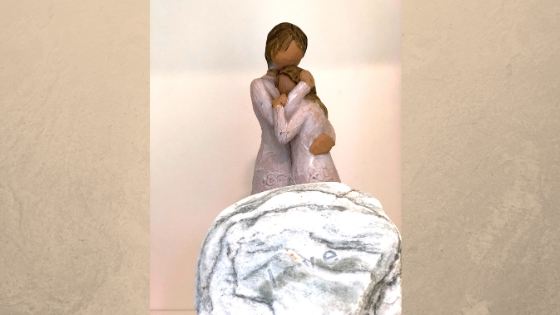In this book filled with love and clarity, Hanh gives us exercises to help us to connect with and nurture our wounded inner child, who was wounded by parents who have been wounded themselves and so on. It is common for these patterns of wounding dysfunction to repeat themselves generation after generation. Those who came before us may not have had the time or the tools to do the healing work that would have led them to wholeness, but with the tools that Hanh offers in Reconciliation, we can take small steps, which may eventually lead to healing for ourselves, and for those who come after us.
In my own experience, it has been a challenging journey to connect with the parts of myself that I spend the first half of my life ignoring. I was mystified when these feelings of abandonment and panic arose in me and I knew that were coming from somewhere other than my current reality.
Nature gave me the space I needed to understand my pain and to give it the time and nurturing that would eventually bring me to balance. Now that I can understand the depth of my emotions a little better I can give myself the compassion I need to re-parent the part of myself that is in need of comfort and understanding.
If I am striving too hard, I know that my overachieving inner child needs some tender love and reassurance that she does not need to DO anything but only BE to be worthy of love.
If I am feeling deeply sad I will sometimes find a despondent teenager inside who feels misunderstood and alone. I can converse with her and let her know that I am here for her always and that I understand how she feels.
If I am feeling anxious it is sometimes the abandoned baby within me that feels panicky in a world that is unsafe due to the lack of nurturing energy. When this is the case I try to take some time that day to connect with this unsettled part of myself, take her in my arms and give her the cuddles, love and soothing that she needs.
It sounds kinda crazy I know, but I've found that it really does work and after a few minutes so doing these practices I feel calmer and more centred. I find that this re-parenting of myself is both powerful and effective.
Diana Raab in Psychology Today also endorses Hanh's Reconciliation book for those interested in healing their inner child.
"Thich Nhat Hanh suggests breathing in and saying, “I go back to my inner child,” and breathing out and saying, “I take care of my inner child.” You can take care of your inner child by writing some dialogue from your inner child’s point of view. This gives a voice to your pain. Sometimes that’s all the pain needs. Other times, it might need to be addressed through deeper psychological work.
Acknowledging the inner child means treating him or her with respect and love. You can do so by saying, “I love you,” “I hear you,” “I’m sorry you feel this way,” and “Thank you for being you.”
Cradle your Inner Child meditation video that is also designed to help those of you on the inner journey.
Sending love out to you all, and especially to the inner child that dwells within each and every one of us.
Next time you are feeling really emotional, anxious or scared try this simple meditation and see how it works for you.

Leave a comment